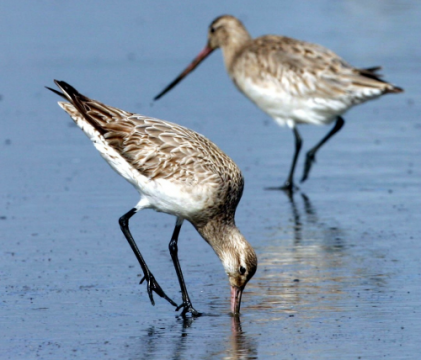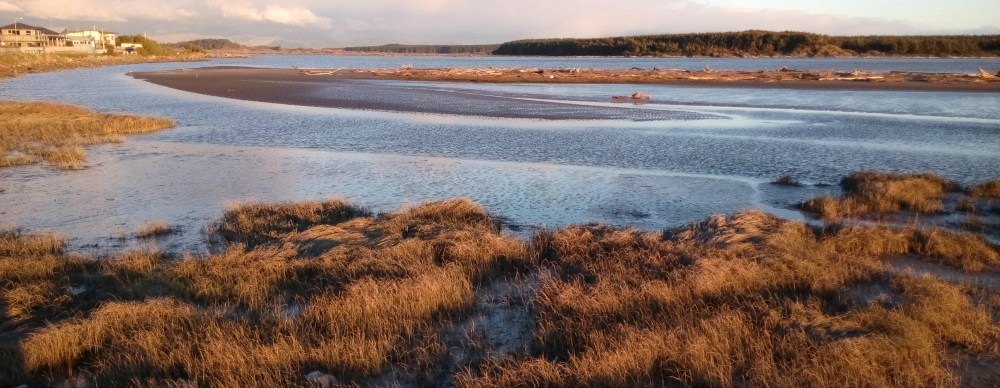Speaking Up for the Humble Estuary
Why aren’t estuaries covered by existing freshwater protections? Amelia Geary, Forest & Bird campaign manager for freshwater, argues they should be.

Godwits at Manawatū Estuary.
The Manawatū estuary used to be teeming with shellfish and birds, a place filled with people fishing and gathering kai/food. Robin Hapi, Chairman of the Save Our River Trust based in Foxton, grew up on the shores of the estuary at a time when one could fill a basket with pipis without trouble. “This is no longer the case,” he says, “Now you have to know where to look.”
The Manawatū estuary is of international significance, a Ramsar site with 98 different bird species recorded living there. Just upstream at Whirokino is the largest known inanga/whitebait spawning ground in the country.
“There used to be wharves on the Manawatū River at Foxton, flax was harvested from the swamps and exported by the tonne. Those swamps are now farms. I can remember swimming in the river as a boy. You can’t do that now at Foxton, it’s full of silt,” says Robin.
In 1943, a cut was made at Whirokino as a flood protection measure. However, an unexpected flood saw the Manawatū River make a complete diversion. Now the part of the river at Foxton, known as the Foxton Loop, is a silted-up shadow of its former glory.

Manawatū estuary is one of international significance (Photo by Amelia Geary).
Estuaries are defined as ‘coastal water’ in the Resource Management Act even though they are actually part of the wide lower course of a freshwater river, where the river’s current is met by saltwater tides.
Estuaries are currently protected under the New Zealand Coastal Policy Statement. But the statement does not (by definition) protect estuaries from the sediment and pollutants arriving from the freshwater catchment upstream. These are caused by unsustainable land use practices many kilometres inland.
Estuaries are in the brackish area of environmental policy and are currently missing from 2014 National Policy Statement for Freshwater Management (NPS). But Parliamentary Commissioner for the Environment, Dr Jan Wright, says they should be included.
“Estuaries are not currently covered by the policy, although they are particularly vulnerable because of their location at the bottom of catchments,” she said in June, following the publication of her latest critique of the NPS.
“Estuaries are home to many shellfish, wading birds and juvenile fish like snapper, eels and whitebait, and should not be ignored. The Government’s review of its water quality policy next year is an opportunity to ensure that it will actually lead to better water quality in our rivers and streams, our lakes and estuaries and groundwater.”
Forest & Bird agrees. We would like to see meaningful bottom lines for freshwater management. The current bottom line of 6.9 mg/l of nitrate means that over 99 percent of our rivers ‘meet’ the standard.
It is hard to understand how every summer warning signs go up to not swim or walk your dog – yet, according to the current regulations, water quality is just fine.
We believe it is critical the government includes estuaries in the NPS when it reviews the policy next year. We would also like to see a strengthening of the framework through which the NPS is implemented.
Both measures are vital and will improve freshwater
protection in this country. If groups like Forest & Bird and Save Our River Trust are to make a difference, we need strong freshwater policy to support our efforts – or they will ultimately prove futile.
This article was originally featured in the spring issue of Forest & Bird’s Magazine. If you would like to receive a copy of your own, please consider joining us.
Join Now
